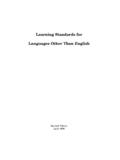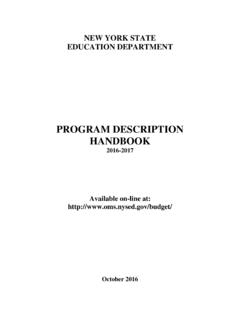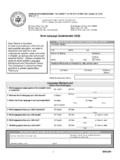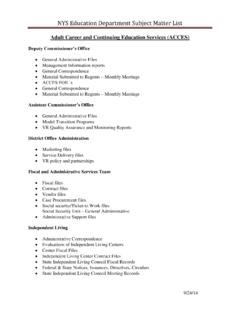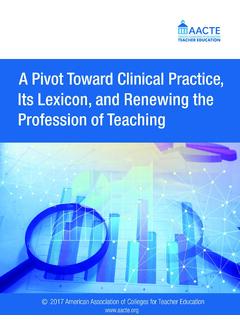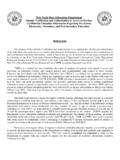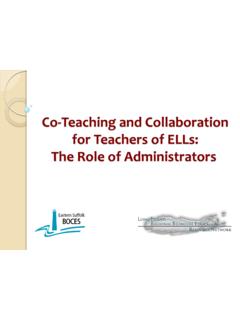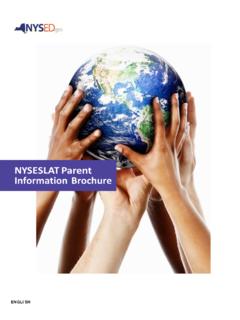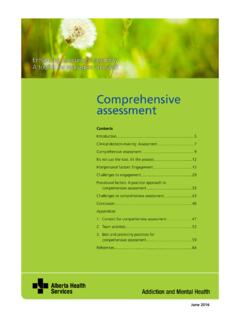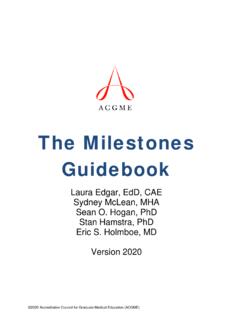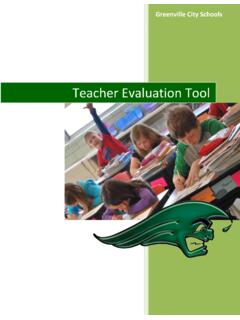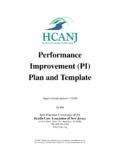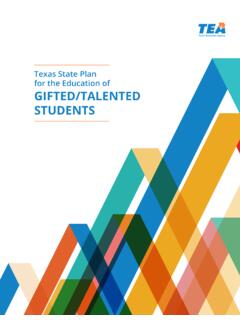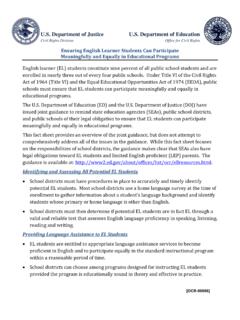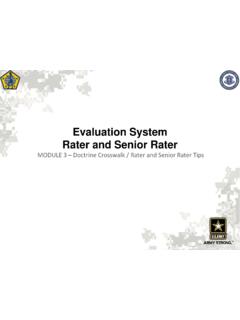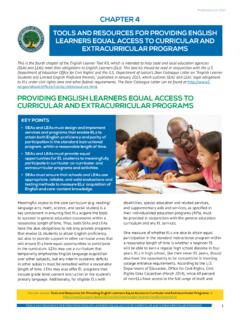Transcription of Learning Standards for Health, Physical Education, and ...
1 Learning Standards for Health, Physical Education, and Family andConsumer Sciences at Three Levels Standard 1: Personal Health and Fitness Students will have the necessary knowledge and skills to establish and maintain Physical fitness, participate in Physical activity, and maintain personal health. Standard 2: A Safe and Healthy Environment. Students will acquire the knowledge and ability necessary to create and maintain a safe and healthy environment. Standard 3: Resource Management. Students will understand and be able to manage their personal and community resources. 1 Standard 1 Personal Health and Fitness Elementary Health Education Physical Education 1. Students will understand human growth and development and recognize the relationship between behaviors and healthy development.
2 They will understand ways to promote health and prevent disease and will demonstrate and practice positive health behaviors. Students: know how basic body systems work and interrelate in normal patterns of growth and development possess basic knowledge and skills which support positive health choices and behaviors understand how behaviors such as food selection, exercise, and rest affect growth and development recognize influences which affect health choices and behaviors know about some diseases and disorders and how they are prevented and treated practice and support others in making healthy choices. This is evident, for example, when students: describe the basic structure and functions of human body systems identify the harmful effects of alcohol, tobacco and other drugs explain how eating nutritionally balanced meals and snacks promotes health describe the Physical , social and emotional indicators of healthy people demonstrate the use of interpersonal communication skills to enhance health identify responsible health behaviors and demonstrate strategies to improve or maintain personal health demonstrate health practices such as washing hands, covering one s mouth when coughing or sneezing, and brushing and flossing teeth identify common health problems and indicate how they can be prevented, detected and treated set a personal health goal and track progress toward its achievement.
3 Key ideas are identified by numbers (1). Performance indicators are identified by bullets ( ). Sample tasks are identified by triangles ( ). 1. Students will perform basic motor and manipulative skills. They will attain competency in a variety of Physical activities and proficiency in a few select complex motor and sports activities. Students will design personal fitness programs to improve cardiorespiratory endurance, flexibility, muscular strength, endurance, and body composition. Students: participate in Physical activities (games, sports, exercises) that provide conditioning for each fitness area develop Physical fitness skills through regular practice, effort, and perseverance demonstrate mastery of fundamental motor, non- locomotor, and manipulative skills, and understand fundamental principles of movement understand the effects of activity on the body, the risks associated with inactivity, and the basic components of health-related fitness (cardiovascular, muscle strength, muscle endurance, flexibility, and body composition)
4 Demonstrate and assess their fitness by performing exercises or activities related to each health-related fitness component, and establish personal goals to improve their fitness understand the relationship between Physical activity and individual well being. This is evident, for example, when students: demonstrate basic motor skills (run, climb, hop), manipulative skills (throw, catch, strike), and non-locomotor skills (balance, weight transfer) using mature motor patterns while engaged in a variety of activities apply the concepts and principles of human movement to the development of new skills ( , catching objects while moving, throwing objects using opposition) adjust performance of skill as a result of monitoring or assessing previous performance ( , moves closer to target or throws at altered angle of release following toss that falls short)
5 Do additional push-ups each day to improve upper body strength, additional stretches to improve flexibility, and additional running to develop cardiorespiratory fitness engage in Physical activity and frequent monitoring of pulse rate to reach and maintain a target heart rate for an appropriate amount of time perform appropriate warm-up and cool-down exercises before and after vigorous activity to avoid muscle injury set a personal Physical activity goal and track progress toward its achievement. STANDARD 1 2 Students will have the necessary knowledge and skills to establish and maintain Physical fitness, participate in Physical activity, and maintain personal health. Elementary Family and Consumer Sciences 1. Students will use an understanding of the elements of good nutrition to plan appropriate diets for themselves and others.
6 They will know and use the appropriate tools and technologies for safe and healthy food preparation. Students: understand the importance of nutritious food and how it contributes to good health, make simple nutritious food choices, and assist with basic food preparation use simple household tools safely to perform a variety of everyday tasks recognize how a family contributes to personal health. This is evident, for example, when students: know the food groups as described in the food guide pyramid and plan meals and snacks that include a nutritious balance of foods prepare simple snacks, handling food properly, and using utensils safely wash hands before and after handling food use age appropriate technology such as microwave for food preparation identify ways a family helps its members maintain their health.
7 STANDARD 1 3 Standard 1 Personal Health and Fitness Intermediate Health Education Physical Education 1. Students will understand human growth and development and recognize the relationship between behaviors and healthy development. They will understand ways to promote health and prevent disease and will demonstrate and practice positive health behaviors. Students: integrate knowledge of basic body systems with an understanding of the changes that accompany puberty apply prevention and risk reduction strategies to adolescent health problems demonstrate the necessary knowledge and skills to promote healthy adolescent development analyze the multiple influences which affect health decisions and behaviors. This is evident, for example, when students: describe bodily changes that occur during adolescence demonstrate a variety of problem solving, communication and stress management skills to address health compromising behaviors such as fad dieting, alcohol, tobacco, and other drug use, early sexual involvement and violent behavior predict how decisions regarding health behaviors have consequences for self and others describe the interrelationship of social, emotional and Physical health during adolescence explain how lifestyle, family history and other factors are related to the cause or prevention of diseases and other health problems.
8 Key ideas are identified by numbers (1). Performance indicators are identified by bullets ( ). Sample tasks are identified by triangles ( ). 1. Students will perform basic motor and manipulative skills. They will attain competency in a variety of Physical activities and proficiency in a few select complex motor and sports activities. Students will design personal fitness programs to improve cardiorespiratory endurance, flexibility, muscular strength, endurance, and body composition. Students: demonstrate competency in a variety of Physical activities (games, sports, exercises) that provide conditioning for each fitness area know that motor skills progress in complexity and need to be used in the context of games and sports with additional environmental constraints combine and integrate fundamental skills and adjust tech nique based on feedback, including self- assessment understand the relationship between Physical activity and the prevention of illness, disease, and premature death develop and implement a personal fitness plan based on self- assessment and goal setting, understand physiological changes that result from training, and understand the health benefits of regular participation in activity develop leadership, problem solving, cooperation, and team work by participating in group activities.
9 This is evident, for example, when students: throw objects for accuracy and distance to moving targets, or use a variety of strategies to gain offensive or defensive advantage in a game perform motor/movement skills in a variety of structured games and sport activities requiring the integration of skills ( , hand or foot dribble while preventing opponent from taking ball) self-analyze a skill or strategy in order to improve performance, , adjusting throw using principles of rotation and force application select a variety of appropriate activities to improve one or more components of health-related fitness based on a fitness assessment monitor heart rate as a means for determining intensity and duration of activity demonstrate correct form in various Physical activities to prevent injury ( , weight training, lifting, and climbing) analyze a partner s performance in a movement task use video taping to assist in self assessment of a skill.
10 STANDARD 1 4 Students will have the necessary knowledge and skills to establish and maintain Physical fitness, participate in Physical activity, and maintain personal health. Intermediate Family and Consumer Sciences 1. Students will use an understanding of the elements of good nutrition to plan appropriate diets for themselves and others. They will know and use the appropriate tools and technologies for safe and healthy food preparation. Students: understand the relationships among diet, health, and Physical activities; evaluate their own eating patterns; and use appropriate technology and resources to make food selections and prepare simple, nutritious meals apply principles of food safety and sanitation recognize the mental, social, and emotional aspects of good health apply decision making process to dilemmas related to personal health.

